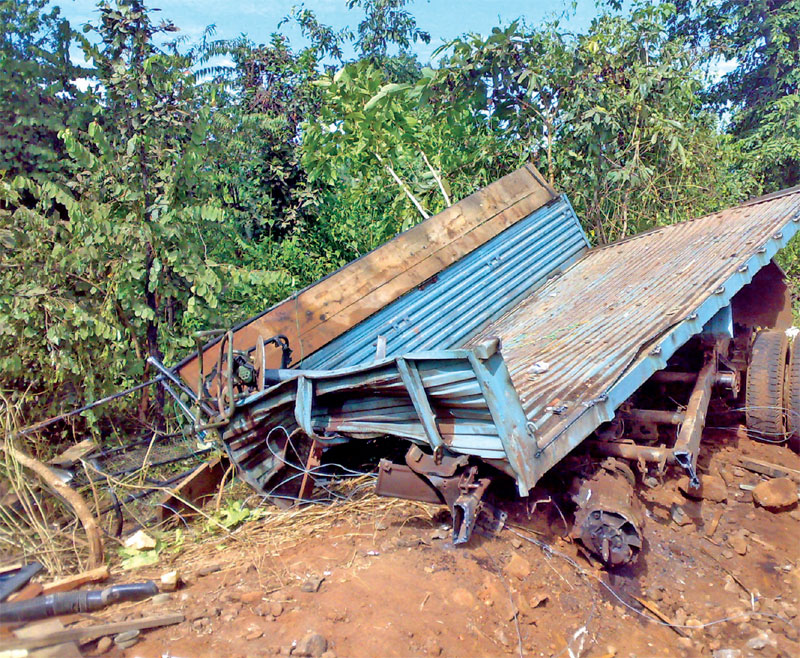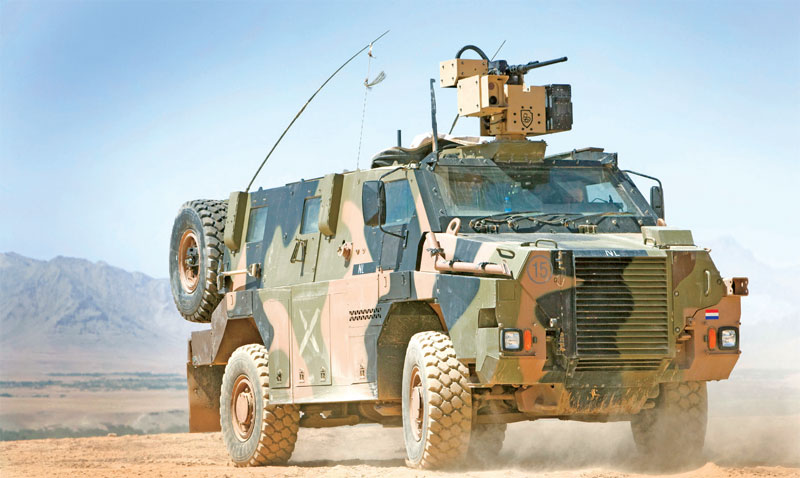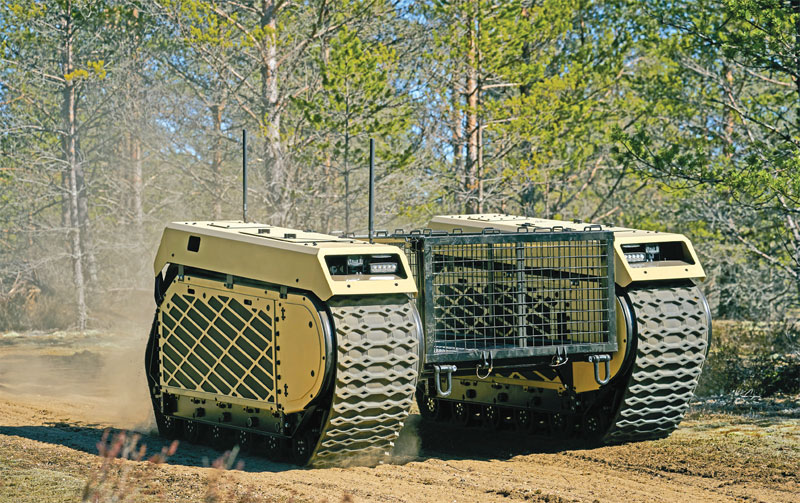Countering IEDs remains a challenge, especially in asymmetric war conditions
Smruti Deshpande
At the United Nations Security Council’s open debate on mine action in April 2021, the Secretary General António Guterres said that land mines, explosive remnants of war and improvised explosive devices maim and kill indiscriminately. “They are left in the path of women walking to work, a family displaced by conflict and seeking safety, [and] children on their way to school. They crush lives and end livelihoods. Their mere presence can stall development and shatter stability,” he said. He closed his talk with, “…Efforts to eradicate them reflect humanity at its best.”

The United Nations (UN) deems IEDs as the world’s oldest types of weapons. IEDs are used all over the world but it is the most conflict-ridden countries, that are also the world’s poorest, which suffer the most. In 2018, military adviser in India’s Permanent Mission to the UN Col Sandeep Kapoor had said that an analysis of the fatal casualties among peacekeeping personnel in the last four years indicate that at least a quarter of them were due to IED attacks.
According to Action on Armed Violence (AOAV), a London-based charity, conducting research and advocacy on the incidence and impact of global armed violence from 2011 to 2020, 1,71,223 deaths and injuries were reported across the world from IEDs. They also accounted for 52 per cent of all civilian casualties recorded in the last 10 years.
According to AOAV, ‘At least 14 countries saw more than 1,000 civilian deaths and injuries from IED attacks: Iraq, Afghanistan, Pakistan, Syria, Nigeria, Somalia, Turkey, Yemen, Lebanon, Thailand, India, Egypt, Philippines and Cameroon.’
Iraq has been the worst-impacted country by IEDs, with 3,392 IED incidents, resulting in 53,706 casualties, including 46,093 civilians. Since 2013, the impact of IEDs in Iraq has been steadily decreasing. In Afghanistan, it peaked in 2019, but decreased in 2020.
The World at its Worst
The India-Pakistan border population remains vulnerable to explosives given the decades-long unrest in Kashmir. Land mines and other Explosive Remnants of War (ERW) continue to endanger lives. Among the victims are children under eight years of age. Human Rights activists allege that the IED menace persists because security forces fail to clear the area after operations.
India is a signatory to the United Nations Protocol on Explosive Remnants of War, which requires nations involved in a conflict to ‘mark and clear, remove or destroy explosive remnants of war.’ Under the treaty, it is mandated that civilians must be protected from the risks and effects of ERWs. This might include ‘warnings, risk education to the civilian population, marking, fencing and monitoring of territory affected by explosive remnants of war.’ The buried mines not only threaten people’s existence, but also seriously limit land use for livelihood activities in India’s violence prone backwards border villages along the Line of Control (LC).
Non-state actors rely on IEDs because they are ‘simple to design, and components remain cheap and easily accessible.’ Criminal networks, porous borders, corruption and poor ammunition stockpile management facilitate the use of IEDs. They kill or maim security personnel as well as civilians. Kashmir, Left-wing Extremism, and the Northeast are the main theatres of operations where IED blasts have become a norm.
In Kashmir, two CRPF personnel were injured in an IED blast in Awantipora in the Pulwama district in May 2022. In Jammu, in a suspected terrorist act, one person was killed and 14 were injured when a low-intensity IED exploded outside a court complex in Udhampur district of Jammu in March 2022. In the same month, a few days apart, an assistant sub-inspector of the Indo-Tibetan Border Police (ITBP)’s 53rd battalion on security duty was killed and a head constable injured by an IED blast in Chhattisgarh. In the north-east, an IED attack took place in the heart of Shillong in January 2022 at the entrance of the famous Centre Point building in the commercial hub, Police Bazar (Khyndailad). While no casualties were reported, massive damage was done to public property. The banned outfit, Hynniewtrep National Liberation Council (HNLC), claimed responsibility.
Mines encompasses both anti-personnel as well as anti-vehicle. However, unlike anti-personnel mines (APMs), anti-vehicle mines (AVMs) are designed to be detonated by the presence, contact or proximity of a vehicle rather than a person stepping on them. The Ottawa Convention on the Prohibition of the Use, Stockpiling, Production and Transfer of Anti-Personnel Mines and their destruction was signed in 1997. It sought to commit to not using, developing, producing, acquiring, retaining, stockpiling, or transferring anti-personnel landmines. Citing ‘legitimate national security concerns’ at its borders, India did not sign the Ottawa Convention. While it has agreed on ‘rejecting the use of land-mines’, it has refused to impose a ban on IED weapons.
In his book, Courage and Conviction: An Autobiography, former chief of army staff (and now Union minister), Gen. V.K. Singh recounts how during Operation Parakram, ‘suddenly from a proactive role, we [the Indian Army] were going into a defensive posture. There was a scramble for mines that hitherto had not been on the agenda… a large number of mines had fuses that wouldn’t fit and, in true Indian Army style the men would try and force the fuse in. Mine after mine exploded, killing men in numbers that were shockingly high.’ The nightmare only got worse. ‘Casualties continued to mount as we watched in frustration. Most areas where mines had been laid had sprouted sarkanda and there was near-total chaos as mines had shifted and were going off at regular intervals, adding to the death toll and the list of wounded,’ he writes.

Unsafe at Home
According to the AOAV data, while the biggest State users of IED have been Syria, Israel, the US-led coalition, Saudi-led coalition and Pakistan, ‘Among state users of explosive weapons, India and Pakistan have been responsible for the most civilian casualties, accounting for 1,020 and 230 civilian casualties respectively.’
However, the world-over it was the non-state actors such as the Islamic State (IS), Taliban, Syrian Rebel, Ukrainian Separatists, al Shabab of Somalia that have caused the maximum civilian casualties. In South Asia, the worst impacted countries have been Afghanistan, Pakistan and India. The key perpetrators in the region were the Islamic State groups and affiliates, Taliban [Afghanistan], Tehrik-e-Taliban [Pakistan], the United States Armed Forces [Afghanistan and Pakistan], NATO [Afghanistan], Pakistan Armed Forces and Left-Wing Extremists [India]. IEDs continue to be a threat to security personnel deployed in Kashmir, LWE-affected areas and parts of India’s Northeast.
While the AOAV research is extensive and gives a clear picture of the IED threat across the world, it also states that 29 per cent of violent incidents go unclaimed and ‘cannot be attributed to a specific actor’.
Road Opening Parties (ROPs) in conflict-ridden regions face a grave threat of adversaries attacking them while performing their duties. Guerrilla warfare tactics employed by LWEs in jungles of central India, as well as militants in Kashmir have caused damage to ROPs several times.
MPVs or Mine-Resistant Ambush-Protected (MRAP) vehicles, even though they provide protection from low-grade blasts, often cause grave spinal injuries to the personnel sitting inside as the vehicle experiences severe shock and gets thrown in the air. For this reason, the CRPF had halted the use of MPVs made by the Ordnance Factories Board (OFB) as they could not withstand the IED blasts in LWE areas. The director general of CRPF in 2011, K. Vijaykumar described these vehicles as ‘coffins on wheels.’ However, despite the criticism, he maintained that these vehicles were useful in troop transportation and provided protection from ballistic ambushes. Though these vehicles were banned for some time, they were allowed into service later.

CRPF’s Challenge
Detection of the IED is the first challenge for the CRPF personnel as they carry out area domination patrols in the vast stretches of LWE-affected areas, the Northeast and the Kashmir valley.
“We need technology to detect an IED from a stand-off distance,” says the principal of CRPF-run Institute of IED Management (IIM), Pune, DIG Dhiraj Kumar. According to him, across the world, there has been technological improvement in this field and there are sensors that help in detecting and pre-emptively exploding explosives. However, using these remotely controlled devices is yet to be effectively formalised.
“Metal detectors, non-linear junction detector, wire-locator, ground penetrating radars, vapour detector are some of the technologies that we already have. The problem is universality of the same. The problem is the probability of a false alarm as well as stand-off distance to operate from. These detectors sometimes give false alarms, which put the men on ground in a quandary. Once these technologies mature enough and are integrated with a remotely operated platform or a drone, it will become easier to capitalise on the same.”
In case of IED disposal after detection, a robotic mechanism (for placement of charge) would clearly be safer than a bomb. The other challenge is that if in case in situ detonation is not possible for some reason, the IED would have to be transported to a safe place for blasting. This process requires utmost care. The extent of the threat would need to be evaluated through remote x-ray and thereafter the IED would need to be transported in total containment vehicle (TCV). “As of now, TCVs and other such technologies are cost prohibitive,” he says.
Furthermore, the nation needs to employ pro-active measures like discontinuation of instantaneous detonator and put in place a system of tracking and tracing pilferage of hazardous material, he says.
There are two types of detonators—one is ‘instantaneous’ and the other is ‘delay’. To time a blast precisely, one needs an instantaneous detonator. According to Kumar, India should consider banning these detonators, at least in such areas as LWE and Kashmir. “It should start happening in a phased manner if immediate shift is not possible.”
Ordnance Grade and commercial explosives are manufactured under ‘strict’ monitoring mechanism of the State. Kumar says, “As the miscreants have limited resources to produce the improvised explosives, they depend on the commercial grade explosive which is pilfered/ siphoned away out of legitimate usage. Whatever explosives we produce within the country, it is for a constructive purpose. The government issues licenses to produce or use it. However, certain notorious elements smuggle these explosives for anti-national activities. Recoveries of large quantity of explosives have been reported. It could be rationally presumed that the recoveries were just a fraction of total pilferage, meaning thereby, the quantity of pilferage should be of concern for policy makers and executers.”
He adds that to keep a track of pilferage, the technology called ‘taggants’ need to be matured. In the past, the concern over plastic explosives was addressed worldwide by adding inert material into the explosives, for easy detection. This technology, if worked upon, may help in backtracking explosives, even after the blast.
On the issue of vehicles, he says that there is nothing called ‘mine-proof’. At best, we can have ‘mine-resistant vehicles.’ The damage or destruction out of an explosive is the function of quantity and quality of the explosive. For instance, a vehicle with the resistance of 100kg TNT, can be subverted by employing more TNT. If government forces develop metal detectors, adversaries would eliminate use of metal in the IED.
“It is a cat and mouse game. To counter the threat from explosives worth Rs 300, the government incurs expenditure to the tune of Rs 300 lakh or even more,” he says.
The Global Tech Game
Market Watch’s recent report suggests that between 2022-2029, the counter-IED equipment market will witness an ‘outstanding growth.’ The segmentation in counter-IEDs by type is divided into vehicle mounted, robotic and hand-held. In India, forces have predominantly used hand-held IED detectors. While they are of immense use, the problem with them is that the personnel have to physically go near the spot and detect using the stick. Though widely used, it is an archaic technology.
MBDA manufactured a VDM route clearance vehicle for counter-mining in 2010. It is capable of clearing 150km in a day at a speed of 25km per hour. It is useful in securing convoys and opening up the main routes during combat operations. It has active decoys controlled by the crew. The official description by MBDA on their website reads, ‘This modular vehicle can operate within a combat engineer detachment as a counter-IED system dedicated to the clearing of IED threats during route opening missions. The VDM is blast resistant and is easily repairable during the mission. The existing configuration provides a good level of protection for the crew through stand-off activation of the threat and a protected cabin against ballistic threat and blast.’
Raytheon, UK, has developed an integrated robotic platform—GroundEye sensor system—for detecting buried IEDs. It is able ‘to view, in real time, the exact position, orientation, size and shape of all individual components of an emplaced or suspected IED or other buried threat with extremely false alarm rates.’
Milrem’s Tracked Hybrid Modular Infantry System (TheMIS) is an unmanned, integrated robotic platform that features Raytheon’s IED detection sensor system GroundEye. It is the first fully modular unmanned ground vehicle. ‘In addition to the IED sensors the vehicle can carry a remote weapon station with large and small calibre weapons for reconnaissance with different sensors attached to it or simply as a support vehicle that carries a squads gear.’ It can carry a payload of 750kg at 25km/h up to 1.5 km away from its operator.

Raytheon also has Soteria, a vehicle-mounted stand-off system that offers high definition IED detection, confirmation and threat diagnostics from a distance. It can detect high, medium, low and zero metal content IEDs and offers day and night operability along with assisted target recognition.
Peace Keeping Security Vehicle (PKSV) is a 4×4 armoured vehicle by General Dynamics Land Systems (GDLS) and can be configured for different purposes like command and control, ambulance, recovery, troop transport, explosive ordnance disposal (EOD) vehicle and C-IED vehicle. It is equipped with a two-piece wind shield assembly with ballistic glass. It has a ground clearance of 35cm and a kerb-to-kerb turning circle diameter of 17cm. It has enough space to accommodate 10 soldiers including the driver along with their equipment.
Lockheed Martin in 2006 fielded its first Radio-Controlled Improvised Explosive Device Defeat (RCIED) system. The company then came up with the Next Generation Symphony Radio-Controlled Improvised Explosive Device Defeat System that was designed to defeat current and emerging threats by IEDs. Lockheed’s Symphony 40, most advanced in its series of C-IED, provides enhanced capabilities. It has an open architecture system developed with the latest technologies. This system simultaneously jams select or multiple electronic signals used to trigger a radio-controlled (RC) IED. The jammer, which is vehicle-mounted, provides continuous coverage across the threat spectrum and includes updated capabilities for effectiveness, security and response. The US Navy in 2016, approved Symphony Block 40. Versions of the earlier model, Block 10/20 were used in Iraq and Afghanistan.
ECLIPSE system by Thales is built around a new-generation jammer that prevents IEDs from being detonated by remote control. After detecting the IED, ECLIPSE jams radio signals across a wide range of frequencies without interfering with the radio communication systems used by friendly forces. It is a compact device to be integrated on board any type of light or armoured vehicle. ECLIPSE comes under Smart Electronic Protection System for Vehicles. STORM-H, a second type of C-IED that the company offers, is for soldiers and comes under Smart Electronic Protection System for Soldiers. It is an ultra-compact, lightweight personal ECM system based on proven technology that provides dismounted soldiers individual protection to counter RCIED.
Thales also has the Thales Bushmaster which is a Protected Mobility Vehicle. It is mobile, ballistic, mine and IED blast resistant. The hull of the vehicle is fully welded steel, constructed for deflecting the pressure of an exploding mine. It is equipped with an interrogation arm designed to help the crew uncover, investigate, and examine suspect items such as IEDs from impacting the Bushmaster. Each arm is fitted with a camera and metal detector to assist in this activity.
The partnership between British Cobham Antenna Systems and Germany’s Vallon GmbH has developed and manufactured Minehound VMR3 which is a hand-held dual-sensor detector. The product offers Cobham’s Ground-Penetrating Radar (GPR) technology with Vallon’s Metal Detector (MD). Cobham has also developed Mine-hound lite to provide GPR at a commercial build standard, meaning a physically lighter detector. Their Amulet Robot allows remote mine detection and can be used when the risk of deploying a de-miner is too high.
The IED threats remain unabated. Thankfully, the technology to counter it continues to evolve aimed at putting the human out of the danger as much as possible. But everything comes with a price tag. It is for the government to decide what value it puts on the soldier’s life.

